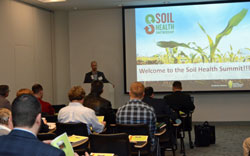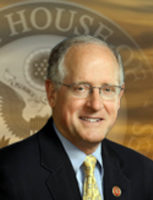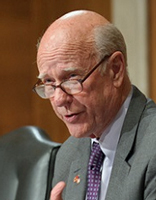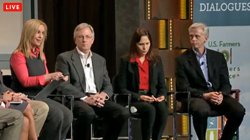 The Soil Health Partnership includes an impressive and distinguished panel of scientific advisers who are happy to be involved in an effort they consider to be critical to the future of the world. Most of those advisers attended the first Soil Health Summit held this week in St. Louis.
The Soil Health Partnership includes an impressive and distinguished panel of scientific advisers who are happy to be involved in an effort they consider to be critical to the future of the world. Most of those advisers attended the first Soil Health Summit held this week in St. Louis.
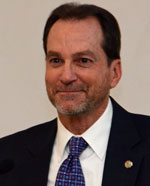 Dr. Wayne Honeycutt, deputy chief for science and technology with USDA’s Natural Resources Conservation Services, is a strong believer in the value of partnerships, especially when it comes to improving the health of our nation’s soils.
Dr. Wayne Honeycutt, deputy chief for science and technology with USDA’s Natural Resources Conservation Services, is a strong believer in the value of partnerships, especially when it comes to improving the health of our nation’s soils.
“When you look at all of the demands, the production, the breadth of the country, the climatic zones, the different types of cropping systems – it’s more than one individual entity, government or private, can do by themselves,” said Honeycutt. But, he adds, farmers are ultimately the leaders in soil health efforts and he was pleased to be able to hear their views first-hand at the summit. “Just being able to hear from our farmers on what’s working for them or not working for them and how we can work with them better is just a real critical part of this effort,” he said.
Interview with Wayne Honeycutt, USDA-NRCS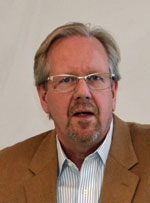 Cornell University professor of Soil and Water Management Dr. Harold van Es says soil health is really everybody’s business and he defines soil health as the capacity of soil to function. “Healthy soil functions well,” he explains. “It allows for good crops to be grown or good trees to be grown in urban environments, it allows for filtration of water, it sustains very important biological functions…and of course, we build our homes on soil.”
Cornell University professor of Soil and Water Management Dr. Harold van Es says soil health is really everybody’s business and he defines soil health as the capacity of soil to function. “Healthy soil functions well,” he explains. “It allows for good crops to be grown or good trees to be grown in urban environments, it allows for filtration of water, it sustains very important biological functions…and of course, we build our homes on soil.”
Dr. van Es reminded participants at the summit that 2015 is the International Year of Soils declared by the United Nations and he encourages people to get involved in events and promotions being organized by the Soil Science Society of America to celebrate #IYS.
Interview with Dr. Harold van Es, Cornell University2015 Soil Health Summit Photo Album



